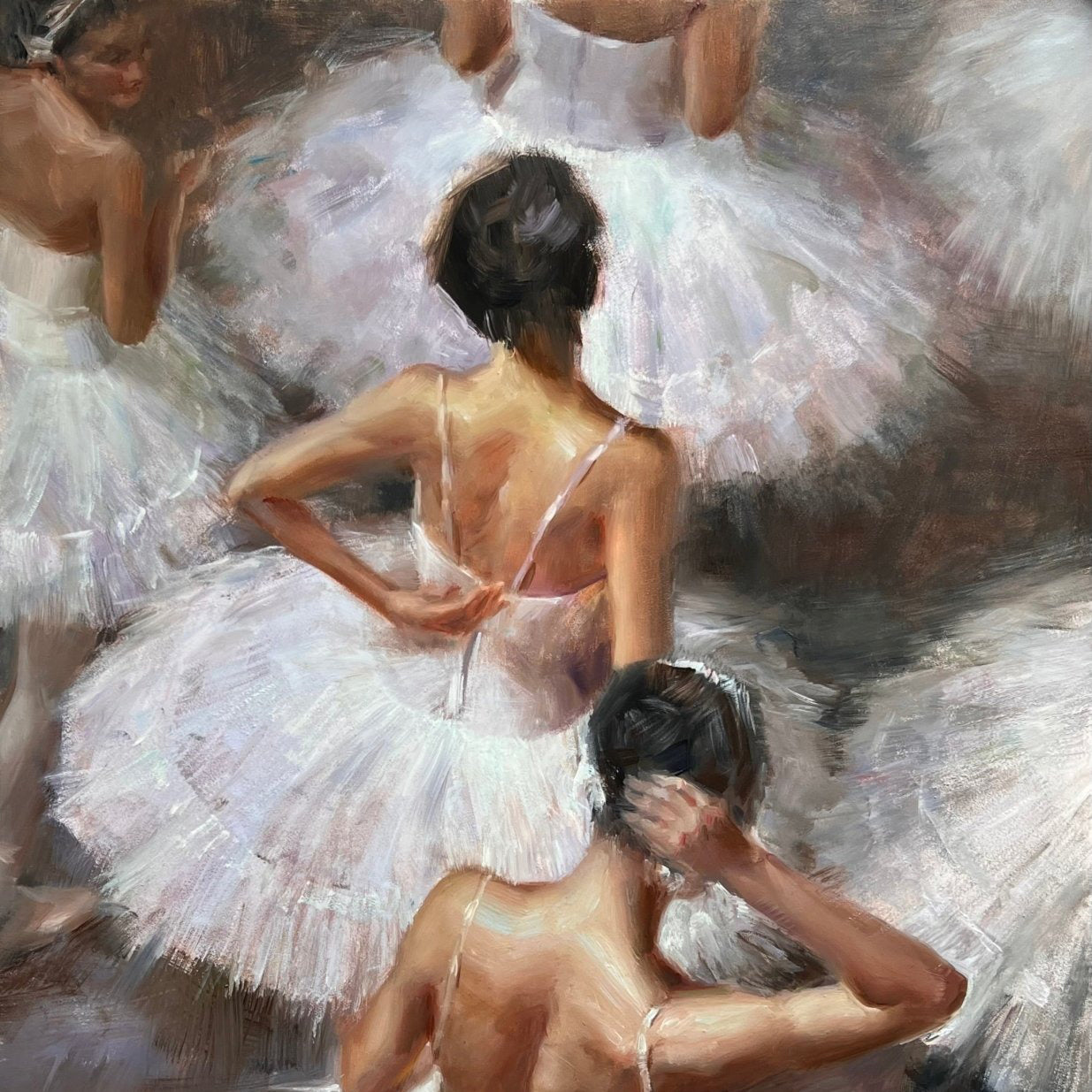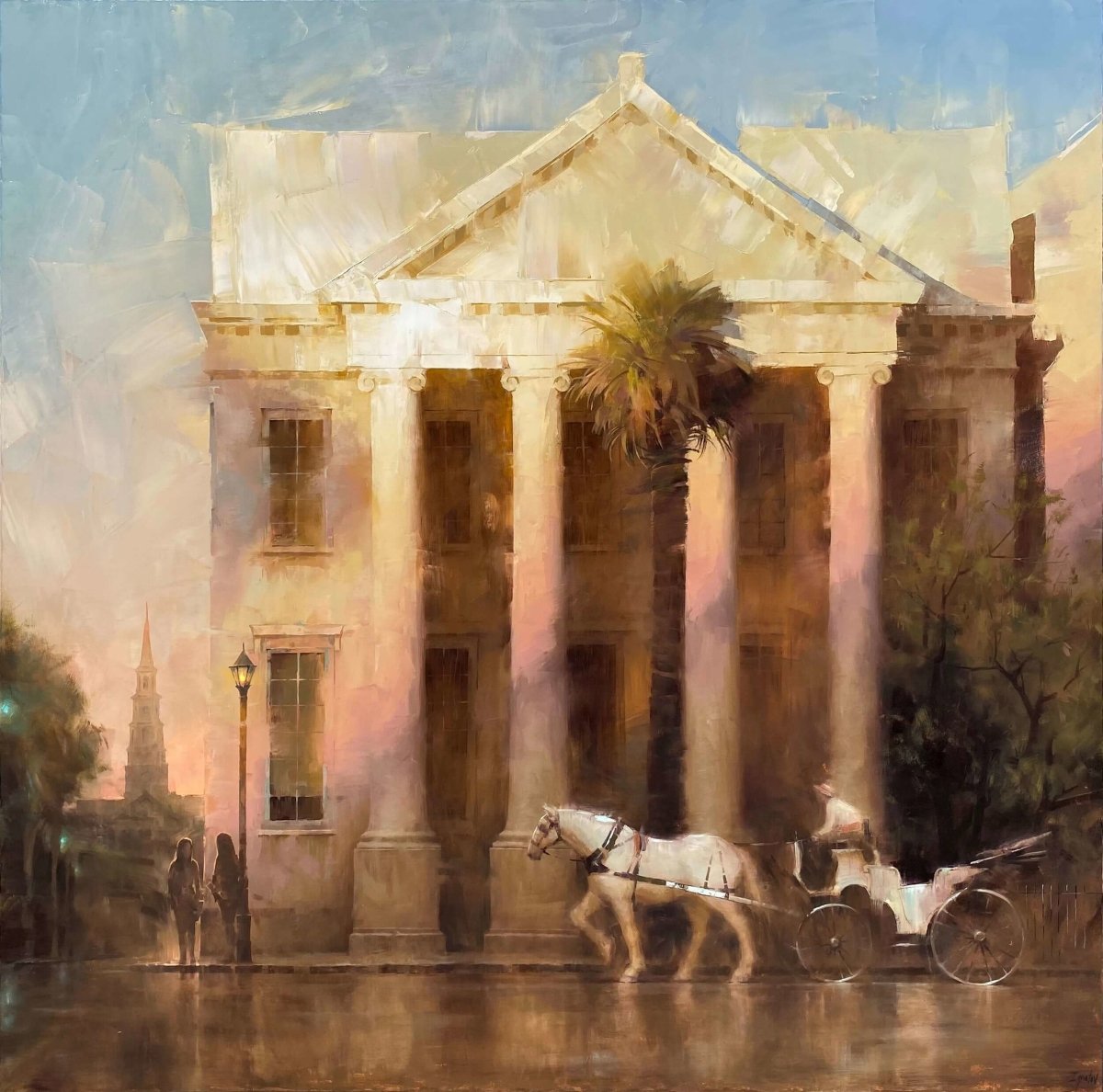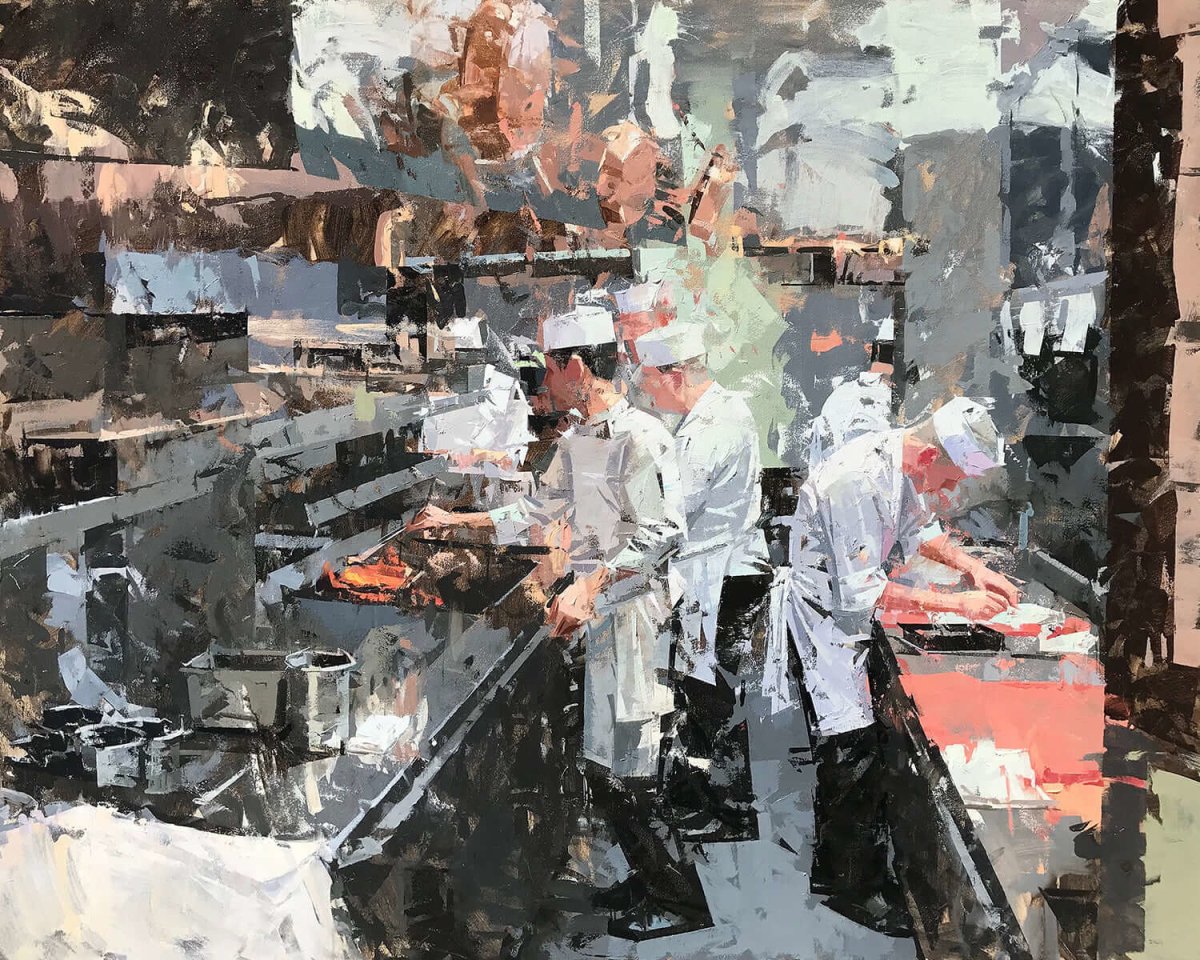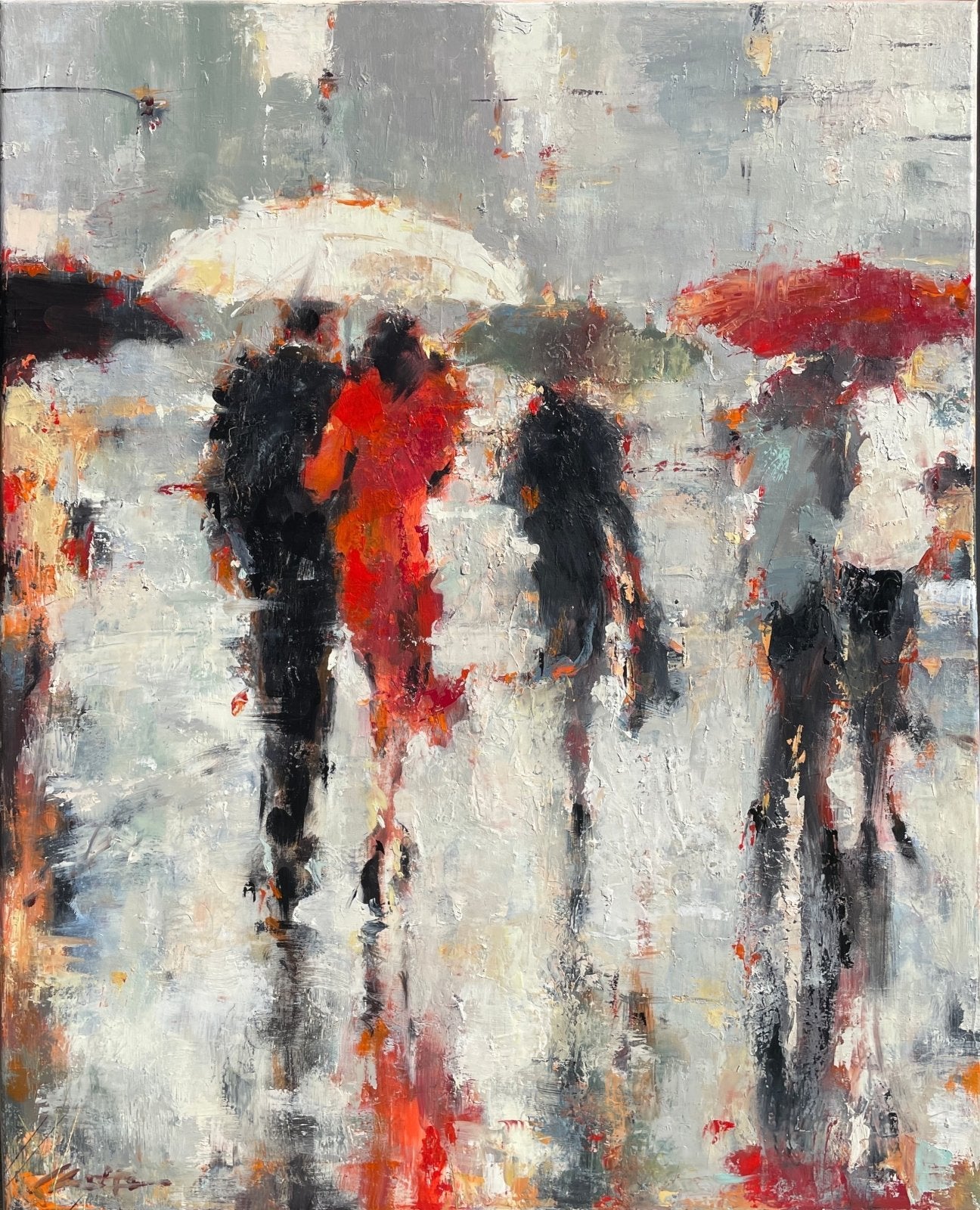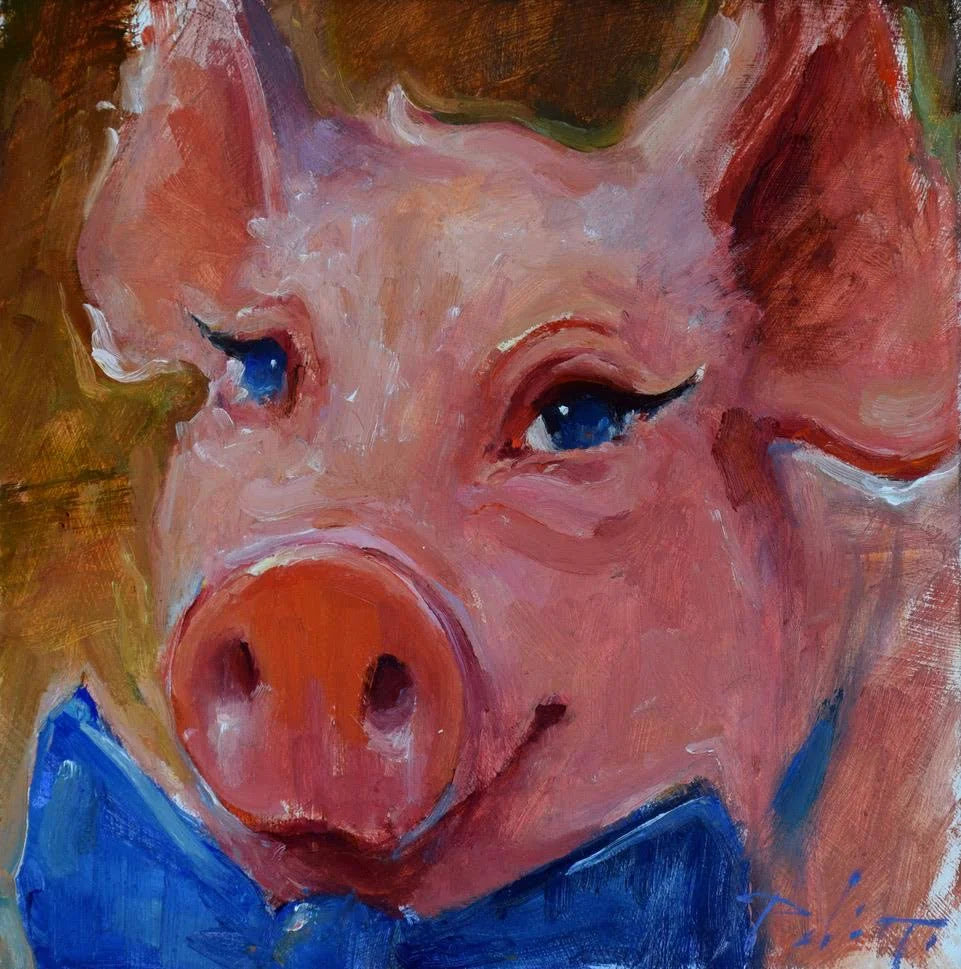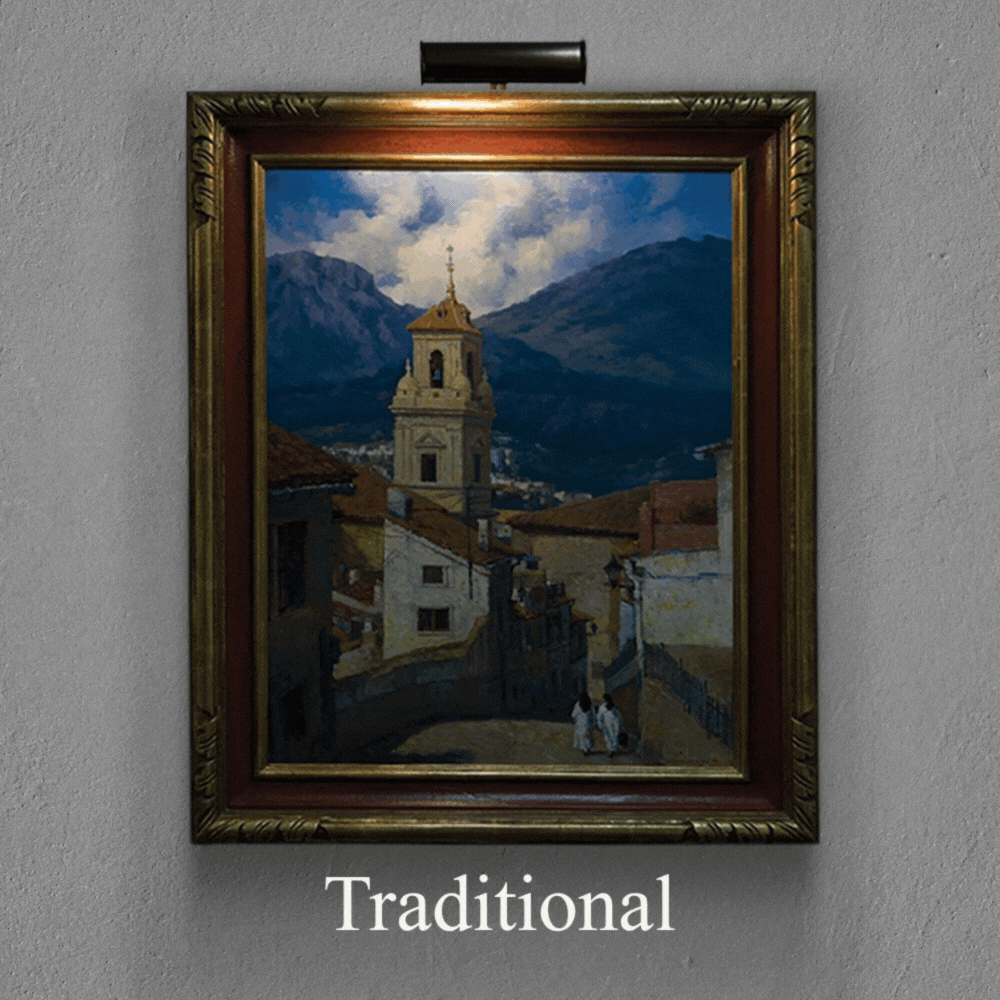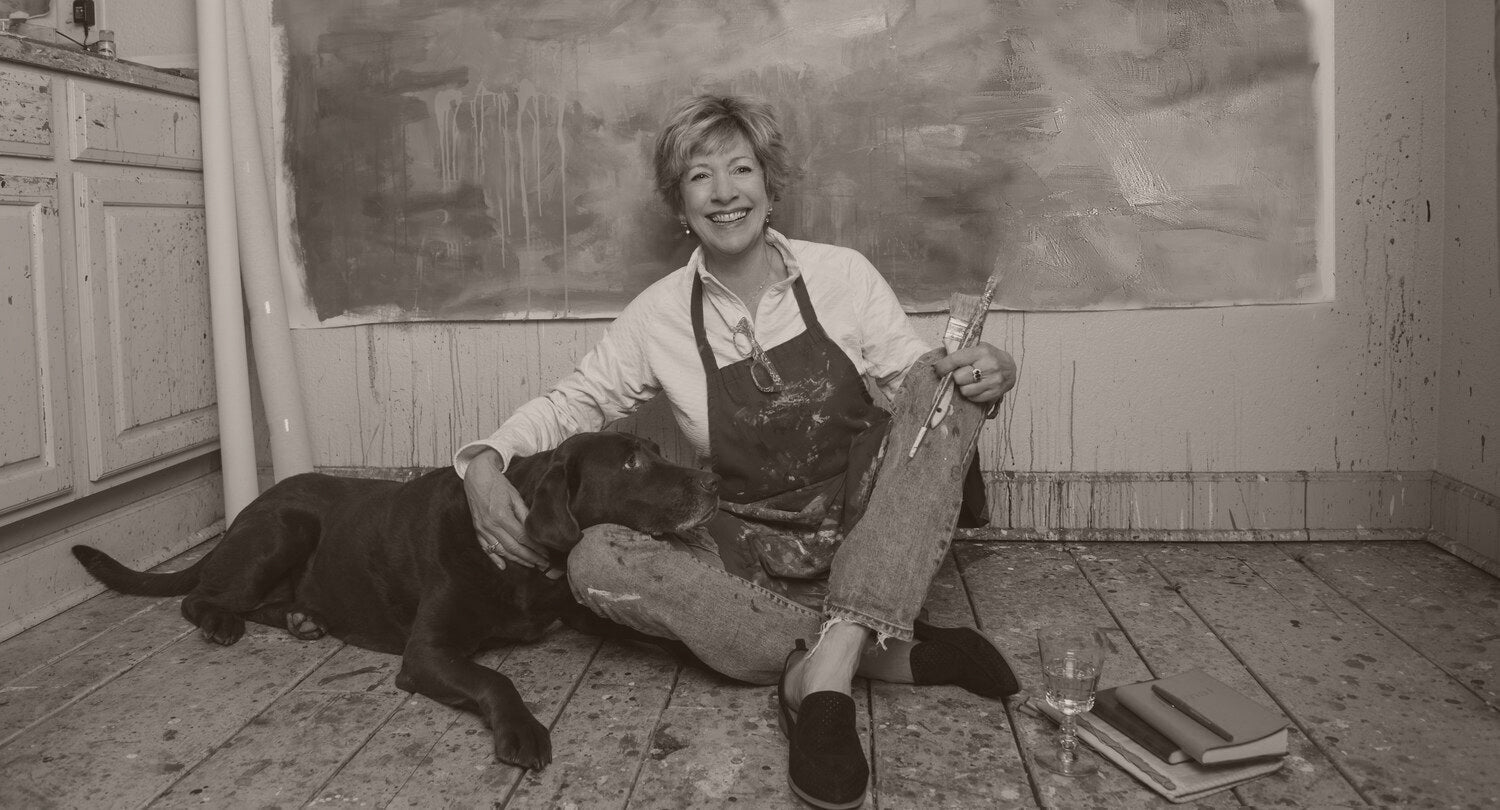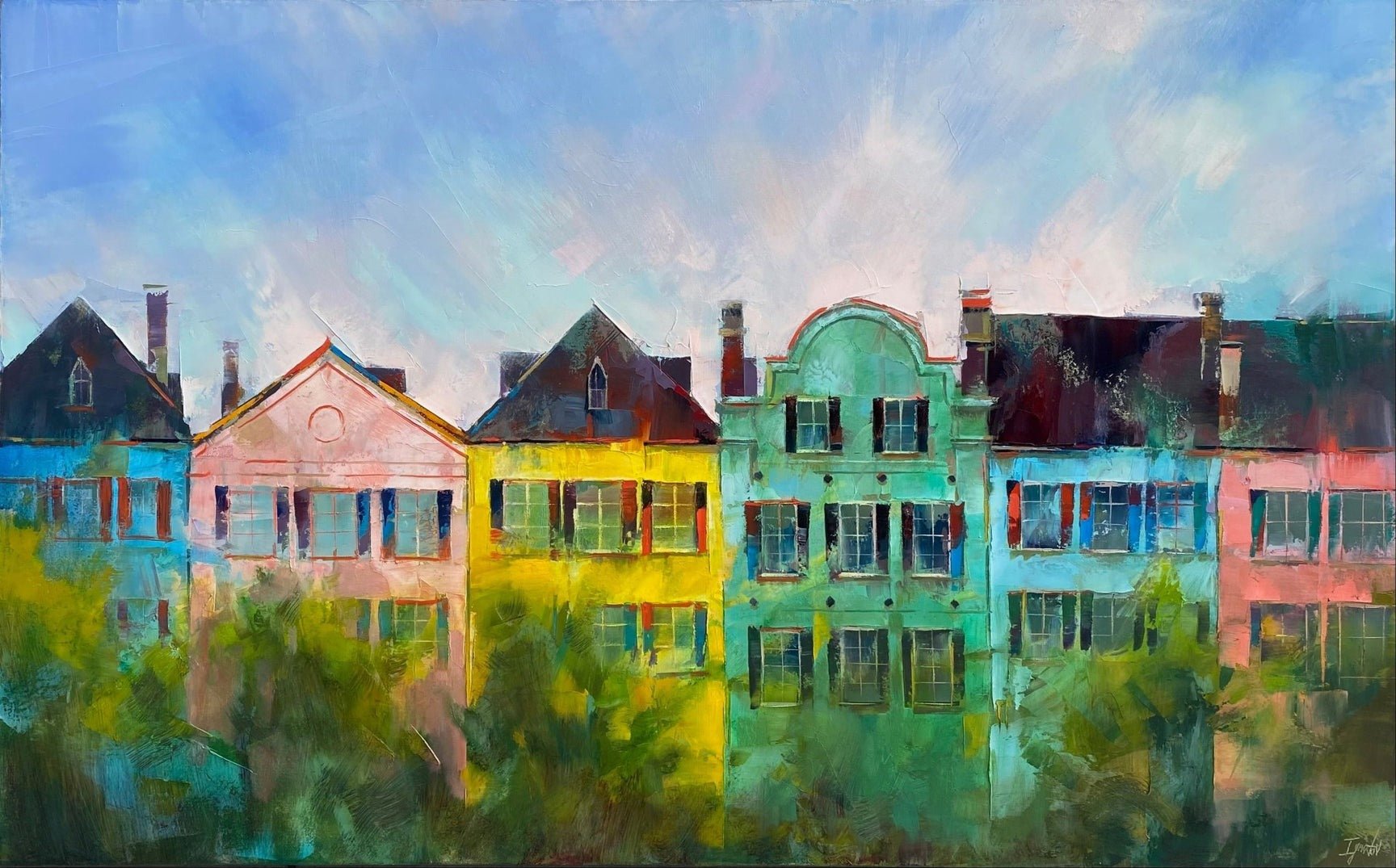Exploring Sgraffito as a Mark Making Technique
Sgraffito, also known as scraffito, is a versatile artistic technique that is used in both painting and sculpture. In painting, sgraffito involves scratching or incising the surface of an oil painting to reveal the layer beneath, creating contrasting designs or patterns. In sculpture, the technique is used to create decorative or textural effects by scratching or incising the surface of the material with a sharp tool. This article will delve into both uses of sgraffito, exploring how the technique is used in each context and highlighting how the artists in our galleries use the practice today along with some notable applications in art history.
One example of a sculptor who utilizes sgraffito is Leo Osborne, who begins shaping wood burls with a chainsaw. He then refines these burls using increasingly more precise tools, ultimately finishing with fine-grain sandpaper. Often, Osborne's wood burls are molded and cast into bronze, which results in sculptures with a natural look, with wood grain visible in the bronzes. Pictured below is a bronze sculpture of a lion titled "Lil' Sunrise". 
It is worth noting that Osborne's approach to sculpting, starting with wood rather than pliable clay, is quite unique. Nonetheless, his method has proven to be effective in creating sculptures that have a distinct, natural aesthetic.
In painting, the artist will applies two or more layers of oil paint, allowing each layer to dry before applying the next. The top layer is then scratched or scraped away with knives, chisels, or combs to reveal the underlying layer. The depth and direction of the scratches determine the resulting effect, allowing the artist to create subtle or bold designs. Look no further than at the detail in Marc Anderson's "Mellow Yellow" boat painting pictured above. Many of the oil painters at LePrince Fine Art use various sgraffito techniques in their work. After reading this article you should have no trouble spotting sgrafitto use.
Sgraffito was widely used during the Renaissance period in Italy and continues to be a popular technique in oil painting today. It is often used to create highly detailed and complex artwork with a unique texture and visual impact.
The effects of sgraffito on a painting can vary depending on how it has been used, but here are some common effects that you might see and recognize:
-
Texture: Sgraffito creates a physical texture on the surface of the painting, as the top layer of paint has been scratched away to reveal the layer underneath. This can create a sense of depth and dimensionality, as well as a tactile quality to the painting. Many artists sign their name with the back of their brush. This can much faster and more precise than painting their signature. Kevin LePrince almost always sign's his paintings using a sgraffito method.

-
Pattern and Design: Sgraffito can be used to create intricate patterns and designs, as the scratches can be made in different directions and depths to create a variety of marks. This can be used to create a sense of movement, rhythm, or balance in the painting. Ignat Ignatov almost uses this method when depicting the intricate iron work seen on gates all around Charleston.
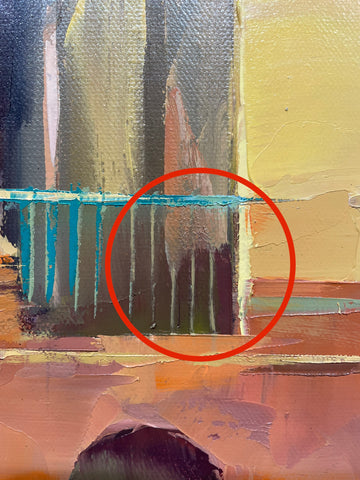
-
Expressiveness: Depending on the marks made with sgraffito, it can create a sense of energy, emotion, or gesture in the painting. The marks can be rough and spontaneous or controlled and deliberate, allowing the artist to express different moods and feelings.
Overall, sgraffito can create a wide range of effects in a painting and sculpture, depending on how it is used. It can enhance the visual interest and complexity, create texture and depth, and add an expressive quality to a piece of art.
Here are a few famous examples of paintings that exhibit use of the sgraffito technique.
-
"Self-Portrait with Two Circles" by Rembrandt: In this oil painting, Rembrandt used scraffito to create the texture of his fur coat, emphasizing the physicality of the subject and adding depth to the painting.
-
"The Kiss" by Gustav Klimt: In this famous painting, Klimt used scraffito to create intricate patterns and designs on the surface of the painting. The scraffito creates a sense of movement and energy, emphasizing the passionate embrace of the figures.
-
"Starry Night" by Vincent van Gogh: Van Gogh used scraffito in this painting to create the swirling patterns in the sky and the texture of the cypress trees. The scraffito adds to the expressive quality of the painting, emphasizing the emotional intensity of the scene.
-
"Black and White" by Jackson Pollock: Pollock used scraffito in this painting to create intricate marks and patterns on the surface of the canvas. The scraffito adds to the visual complexity of the painting, emphasizing the gestural quality of Pollock's abstract expressionist style.
In conclusion, sgraffito is a versatile artistic technique that can be used to create a wide range of effects in both painting and sculpture. From creating intricate patterns and designs to adding texture and depth, sgraffito can enhance the visual interest and expressiveness of a piece of art. Through the works of artists like Leo Osborne, Marc Anderson, Ignat Ignatov, and famous paintings like Rembrandt's "Self-Portrait with Two Circles," Gustav Klimt's "The Kiss," Vincent van Gogh's "Starry Night," and Jackson Pollock's "Black and White," we can see the varied and powerful effects of sgraffito in art history and contemporary art today. As this technique continues to be utilized by artists, we can expect to see even more innovative and inspiring uses of sgraffito in the future.


